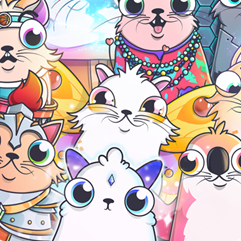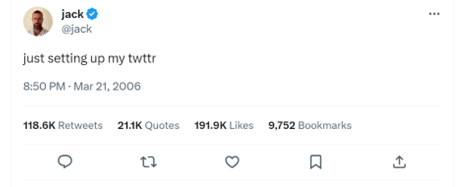
The NFT bubble has burst, and plans to revolutionise digital ownership now seem a pipe dream at best.
Once the Collins Dictionary word of the year in 2021, NFTs are non-fungible tokens, uniquely identified and recorded on a blockchain. They cannot be copied or changed, making them secure from theft or fraud.
However, ownership can be transferred, allowing them to be sold and traded. NFTs may take the form of an image, meme, video, blog, or even a tweet, such as Dorsey’s first ‘just setting up my twttr’, owned by Sina Estavi.
They are a social currency, born from “a desire to do more with blockchain than just cryptocurrency,” according to Steven Schuchart, principal analyst at GlobalData. Their appeal lay in the potential offered by the security of blockchains, which are almost impossible to tamper with, protecting creators and purchasers alike from theft.
For artists, NFTs provided a protected revenue: Anne Spalter, digital artist, explained that “The community also, at least in the beginning, staunchly supported royalties for secondary sales. Although this is no longer the case, at the time it seemed as if this wonderful state of affairs would last and maybe even influence the traditional art world as well.” By writing smart contracts into their NFTs, creators were able to receive automated royalty payments from every transaction. Lockdown catalysed this hype, offering artists a new marketplace.
The first NFT is widely thought to have been created in 2014 – ‘Quantum’ was created on the Namecoin blockchain by Kevin McCoy. It is a kaleidoscopic, pulsing octagon, which was auctioned off through Sotheby’s for $1.47 million. It was a strong start, however; the sector really gained traction between 2018 and 2021, during which time the market saw a 60-fold growth. It was prompted by young, rich celebrities, influencers and artists all taking an interest in the emerging scene, which was rapidly becoming more vibrant with the release of new games and uses for NFTs.
December 2017 saw the CryptoKitties craze boost the hype around NFTs as the game gripped the NFT community: it was so successful that Etherscan reported a sixfold increase in pending transactions on Ethereum within the first week. Each ‘cat’ was a unique NFT with its own digital genome, stored in a smart contract, which allowed them to be bred through an algorithm mirroring real-world genetics. ‘Kitties’ were born with their own ‘cattributes’, determined by the immutable genotype in the smart contract, allowing users to buy, breed and raise their own, unique virtual pets. The concept echoes that of Pokémon, or Tamagotchi, but provides an entirely unique experience.
The market exploded in 2021, with $17.6bn worth of NFTs sold, an increase of 21,000% on 2020’s $82m total, according to a report by nonfungible.com. Amongst an increasingly valuable market, Beeple’s sale of ‘Everydays’ for $69m in March 2021 became the most expensive NFT ever sold. Until this point, NFTs had been perceived more as a speculative bubble than a legitimate market, with many businesses sceptical to enter. Now, with ballooning interest, crazes, and high-value sales, NFTs seemed destined for success. Schuchart explained: “a few high-profile and high-price sales, rampant speculation and sugary media accounts of how NFTs were the future drove frenzy in the market.”
With companies including Nike, Gucci and Tiffany entering the space, NFTs were beginning to seem unstoppable, but with more creators, the market became diluted, crime became rampant, and a fall became inevitable.
When a market grows, so does the number of opportunistic criminals targeting it. The NFT market became a landscape of “rampant fraud, Ponzi schemes, currency washing (money laundering), and rug pulls,” according to Schuchart. Fraudulent creators would drive excitement around a new project, only to disappear with investors’ money, whilst launderers would purchase affordable NFTs using one set of cryptographic keys, only to rebuy it with different keys, creating a sale record that legitimised their cashflow.
Volatile valuations of art put creators at risk of an unstable income and prices have dropped significantly since the initial market boom. Spalter recalls: “When I made my first NFT in early 2020, ETH was around $350 per ETH–then it went up to over $4K, and now is resting around $1,800. Also during that time, and related to those price changes, the marketplace grew dramatically, with more collectors spending more money, and then contracted again.” The hype drove creators into the space and flooded the market, with supply quickly exceeding demand. An excess of low value items in centralised markets prompted trepidation from investors, and NFTs spiralled into an unstable marketplace driven more by FOMO than credible valuation.
With investor apprehension came a reappraisal of the utility of NFTs. By buying an NFT, the proprietor owns a unique record on a blockchain. They do not own copyrights and other people can still access and use the digital asset they have purchased. For example, Sina Estavi owns Dorsey’s first tweet, but it still exists on twitter and we can still publish an image of it:

Source: Twitter
In Schuchart’s words: “Common sense killed NFTs because NFTs provide almost zero value over just buying art, digital or otherwise.” As investors became sceptical about the long-term value of NFTs, they moved back towards traditional investments in less volatile markets.
Estavi bought Dorsey’s tweet in March 2021 for $2.9m but couldn’t sell it by April 2022, his best offer being 0.09ETH – around $280 at the time. It’s worth noting that tweets have always held less value on the NFT market than collectible art; however, the decline in value is representative of a larger trend. Between January and March of 2022, Google searches of ‘NFT’ halved, and social media mentions fell by over 48%. A year on, in March 2023, Meta announced that they would be shutting down support for NFTs on its network. So, are NFTs dead?
Spalter argues that they’re not – yet: “I think they will [stay], but I’m not sure what role they will play for fine artists. They may be used more for collectibles and digital trading cards. I think they can also have value as certificates of authenticity for physical works or offline digital works. To become more mainstream, the ongoing security issues need to be resolved. And a lot depends on how governments continue to regulate crypto currencies as well.”
They were once a cause of serious excitement in the tech world: Eminem, Madonna, Neymar and Adidas all joined the Bored Ape Yacht Club (BAYC), Clearpay offered exclusive NFTs as part of its partnership with London Fashion Week in 2022; and the Ukrainian government worked with Fair.xyz to sell NFTs to raise funds.
For a while, it seemed that NFTs might revolutionise the world’s relationship with digital art. NFTs are still in use in some spheres: Neversea music festival is selling NFTs that provide exclusive access to parts of the festival, whilst Visa is running a Creator Program supporting NFT creators. Nevertheless, the bubble has burst, and unless investors see a new reason to take interest, it looks as though it will be staying firmly popped.







